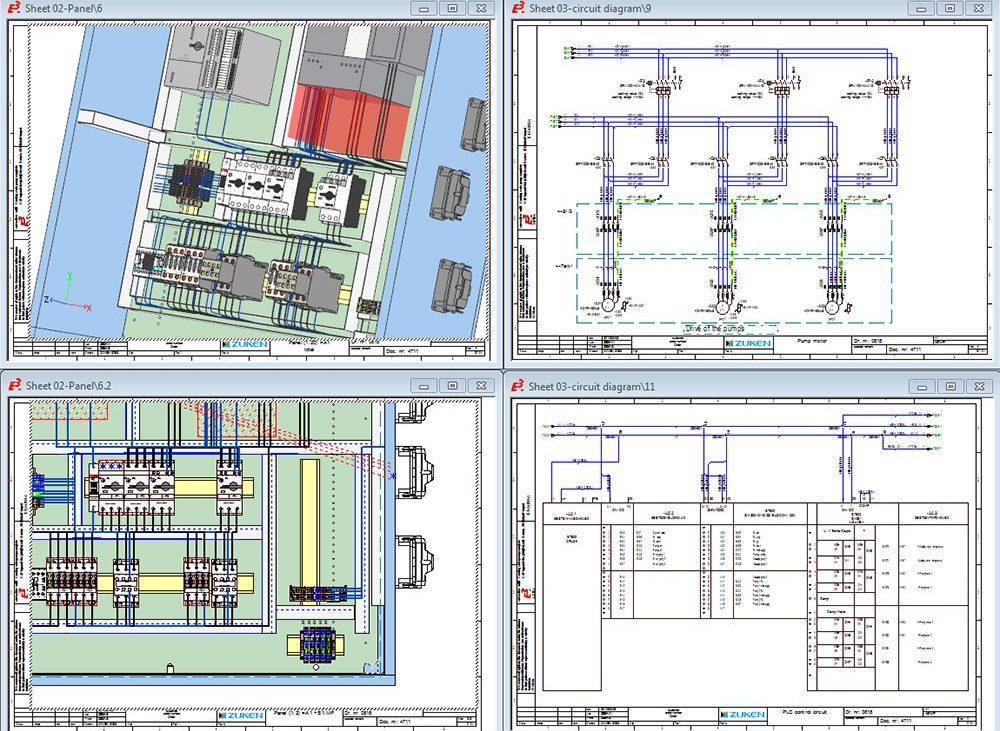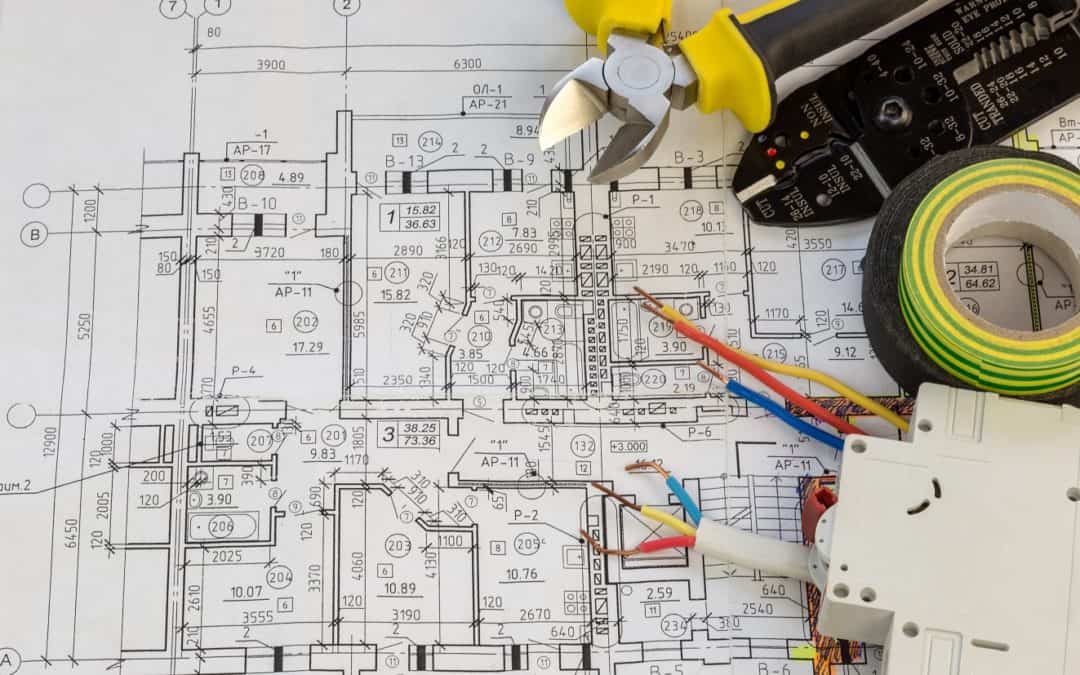Full-Scale Industrial Electrical Design Services to Meet Complex Power Demands
Wiki Article
Innovative Electrical Design Services for Modern Facilities
As city environments expand progressively complicated, including modern technologies such as clever grids and renewable energy resources comes to be vital. These developments not just assure to enhance energy usage but also foster durability against future demands.Significance of Cutting-edge Electric Design
Innovative electrical design plays an essential function in modern facilities, influencing not only performance however likewise sustainability. As cities evolve and the need for power boosts, the need for sophisticated electrical systems becomes vital. These systems have to not just fulfill present needs however additionally expect future development and technical innovations.A well-executed electric design can considerably decrease energy usage, thus reducing functional expenses and reducing ecological effect. By including renewable power resources, such as photovoltaic panels and wind turbines, cutting-edge styles can enhance energy self-reliance and resilience. Additionally, wise grid modern technologies enable for real-time surveillance and monitoring of energy circulation, optimizing efficiency and minimizing waste.
Safety and security is an additional crucial facet of electrical design. Carrying out advanced technologies and rigorous criteria can reduce risks connected with electrical failures, making certain a safe atmosphere for citizens and services alike. In addition, ingenious styles help with flexibility, allowing frameworks to incorporate emerging innovations seamlessly.
Key Fads in Electrical Design
As the landscape of electric design proceeds to evolve, several vital patterns are shaping the future of the sector. One significant pattern is the assimilation of smart modern technology into electrical systems. The proliferation of the Web of Points (IoT) has actually made it possible for real-time monitoring and control of electric gadgets, enhancing performance and promoting anticipating maintenance.An additional trend is the growing emphasis on modular design. This strategy permits for scalable and flexible remedies, making it possible for framework to adjust to transforming requirements without substantial remodellings. Additionally, making use of advanced simulation tools and Building Info Modeling (BIM) is becoming increasingly prevalent, simplifying the design process and improving collaboration amongst stakeholders.
In addition, advancements in products scientific research are leading to the development of lighter, a lot more sturdy, and energy-efficient elements. This advancement is specifically essential for high-performance buildings and facilities tasks.
Finally, there is a significant shift towards data-driven decision-making - electrical load calculation. Leveraging data analytics helps designers optimize systems for efficiency and cost-effectiveness. With each other, these trends symbolize a transformative age in electric design, enhancing performance, sustainability, and strength in contemporary framework
Sustainable Energy Solutions
Lasting energy solutions are progressively ending up being an important emphasis in electric design, reflecting a more comprehensive dedication to environmental obligation and resource effectiveness. These options aim to reduce ecological impact while optimizing power usage in different infrastructures, from property structures to large business centers.Among the leading approaches involves the integration of renewable resource sources, such as solar panels and wind turbines, into electrical systems. This not just minimizes dependency on fossil fuels but also improves energy durability. In addition, innovative power storage space systems, such as innovative batteries, enable reliable monitoring and distribution of energy, making certain that excess energy produced throughout optimal production can be used throughout high demand periods.
Moreover, energy-efficient design techniques are being embraced to improve total system performance. This includes making use of energy-efficient illumination, heating and cooling systems, and wise building innovations that check and adapt power use based upon tenancy and environmental problems.
Smart Grid Technologies
The application of sustainable power services naturally results in the expedition of wise grid technologies, webpage which play an essential role in updating electric systems. Smart grids leverage advanced interaction technologies and information analytics to enhance the integrity, effectiveness, and sustainability of electricity circulation. By incorporating electronic modern technology with standard grid infrastructure, these systems help with real-time tracking, automated control, and boosted decision-making capacities.Among the vital functions of wise grids is their capacity to suit eco-friendly power resources, such as solar and wind power. This versatility not only lowers dependency on nonrenewable fuel sources however also enables an extra decentralized energy production model. Moreover, wise grids allow demand response programs, where consumers can readjust their power use based on real-time rates, consequently promoting power conservation and minimizing peak load demands.
Additionally, smart grid technologies enhance grid durability by allowing quicker recognition and resolution of blackouts, inevitably reducing downtime. With anticipating upkeep and analytics, utilities can enhance operations and enhance solution delivery. As communities and cities proceed to develop, smart grid innovations are important for building a effective and sustainable electrical facilities that satisfies the needs of contemporary culture.

Future-Proofing Framework
To ensure long-lasting feasibility and adaptability, future-proofing framework is crucial in the swiftly evolving landscape of electrical design services. As technology breakthroughs and power demands change, it is essential that electrical systems are created with flexibility in mind. This involves including scalable solutions that can accommodate future upgrades without requiring extensive overhauls.
Additionally, sustainability should be a keystone of future-proofed designs. Using renewable resource resources, such as solar and wind, and optimizing energy effectiveness minimize dependence on nonrenewable fuel sources, lining up with international efforts to combat climate adjustment.
Final Thought
To conclude, innovative electrical design services play an essential function fit modern facilities. By prioritizing adaptability, efficiency, and sustainability, these services deal with the developing needs of energy systems. The integration of wise grid modern technologies and sustainable energy solutions enhances resilience and reduces operational prices. Future-proofing framework with sophisticated simulation tools and modular strategies makes certain that electric systems remain responsive to altering needs, inevitably contributing to an extra lasting and energy-independent future.A well-executed electrical design can significantly minimize power consumption, thus decreasing operational prices and reducing environmental influence. By including sustainable energy sources, such as solar panels and electrical load calculation wind turbines, innovative designs can boost energy freedom and strength. Additionally, ingenious energy storage space systems, such as innovative batteries, make it possible pop over to this site for effective management and circulation of power, ensuring that excess energy generated throughout optimal production can be used during high demand periods.
Clever grids enable demand action programs, where customers can readjust their energy usage based on real-time pricing, consequently advertising power preservation and minimizing peak load needs. (residential electrical design)
As innovation advances and energy needs change, it is crucial that electric systems are designed with adaptability in mind.
Report this wiki page